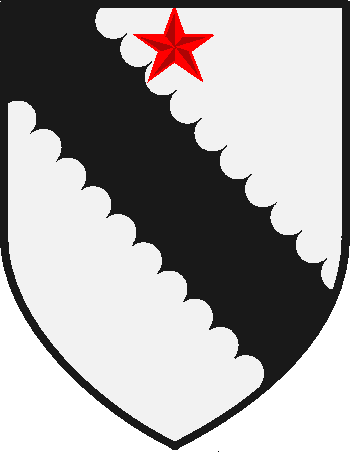 to Bios
Page
to Bios
Page to Family Page
to Family Page to Peerage Page
to Peerage Page to Home Page
to Home PageSir William RADCLIFFE of Ordsall
Died: 15 May 1497/8
Buried: Manchester Church, Lancashire, England
Father: Alexander RADCLIFFE of Ordsall (Sir Knight)
Mother: Agnes HARRINGTON
Married: Jane TRAFFORD (dau. of Sir Edmund Trafford and Alicia Venables) (m.2 Sir James Byron of Clayton - m.3 Sir John Talbot of Salmesbury) ABT 1443
Children:
1. William RADCLIFFE (d. 15 May 1497)
Eldest son and heir of Sir Alexander, was born at Ordsall in 1435. He married Jane, youngest daughter of Sir Edmund Trafford by his wife, Alice, daughter and co-heir of Sir William Venables of Bollin, thus uniting for the third time the ancient lines of Radcliffe and Trafford. Sir Edmund Trafford was skilled in scientific arts and claimed to have discovered a method of transmuting base metals into gold, for which a licence was granted to him and to Sir Thomas Assheton by Henry VI in 1446. He received the honour of knighthood for his gallant conduct at Verneuil in 1424.
William Radcliffe was forty years of age when he succeeded his father at Ordsall. He had gained fame in the wars, and been knighted the year before his succession. He was a devout man esteemed for the nobility of his character, and his generous benefactions made him beloved by the people. The Radcliffes both at Radcliffe and Ordsall had shown a deep interest in the founding of the College at Manchester Church, and William's grandfather, Sir John, is amongst those recorded as being present at the ceremony of collegiation in 1422. The chapel of St. George in the Collegiate Church was founded by the Radcliffe family, and Sir William also founded a chantry at the Altar of the Blessed Trinity in the same church, placing therein a window of richly coloured glass, depicting the Trial and Crucifixion of Our Lord, and further adorned with symbols of the Trinity. After his death, Sir William's pious reputation made this chapel a place of devotion and pilgrimage of the part of the country people. To the chaplain celebrating at the Trinity Altar Elizabeth Brereton, widow of John Radcliffe, Sir William's son, bequeathed a Mass Book with cover and clasps, a silver cruet with 'J.R.' on the cover, two towels, a vestment of green and white velvet with bull's heads on the orphreys, and three shillings and fourpence to buy a sacring-bell. Two years later, Robert Chetham and Isabel, his wife, enfeoffed Richard Bexwicke, Sen., Richard Bexwicke, Jun., James Radcliffe, and others, of lands in Salford and Worsley including Domville House in Salford to found a chantry at the Altar of St. George in the Collegiate Church. This latter chapel was held with the manor of Ordsall. The lower choir of the church was for centuries the exclusive burial place of the Radcliffes of Ordsall, and in consequence was known as the Radcliffe Chancel.
In the autumn of 1496 James IV of Scotland was persuaded to invade England on behalf of Perkin Warbeck, and the men of the northern counties stirred into resistance. Realising the hopelessness of their cause by the lack of English response to their proclamation the Scots retired, pillaging the county without mercy. Sir William Radcliffe and his sons were amongst those who hastened to the defence of the north, and whether from wounds received in the battle or from the ravages of illness, they died within a month of each other. John Radcliffe was the first to succumb on the 12 Apr, and his father and brother William died on the same day, 15 May following. They were buried in the choir of Manchester Church, and one of the recovered brasses previously referred to, showing a knight in plate armour with a sword by his side and his lady in hood and mantle with the effigies of six female children at her feet, is indubitably the memorial to Sir William and the Lady Jane, his wife.
After his death, his widow was married to Sir James Byron of Clayton, whom also she survived, and was married a third time to Sir John Talbot of Salmesbury.
 to Bios
Page
to Bios
Page |
 to Family Page
to Family Page |
 to Peerage Page
to Peerage Page |
 to Home Page
to Home Page |